Though I am not a huge fan of modded gear, I’ve always appreciated the ingenuity exhibited by the DIY side of the audio world.
Just like my other favorite hobby (automobiles), there is always plenty of room for the wrench turners to coexist with the check writers, and while they always like to banter about whose approach is more pure, the decision to mod is up to you.
If you are new to the modding game, keep in mind that a modded piece rarely has great resale value, because once you start tinkering with anything, there are only so many people who will want to purchase your version of nirvana. So keep that in mind before you get out the Sawzall. In this case, if you perform the Sound HiFi mods with care, you could reverse the process and go back to a stock SL-1200, should you decide to sell it.
From the beginning
My journey in HiFi started with a Technics SL1200 about 35 years ago, yet I quickly got caught up in being a proper audiophile trading that table in for a belt-drive Rega Planar 3. To be fair to the Rega, I still prefer the sound of a P3 to the sound of a stock Technics SL-1200, which I find rather dark and cloudy sounding overall. Careful attention to detail when setting up an SL-1200 will wring every bit of resolution for which it is capable, but this is still not a ton.
The good news is that Technics has been building the SL-1200 for a long time and the core turntable mechanism (motor, base and platter) is robustly built. The direct-drive mechanism has a lot of torque and the table has a very weighty presentation with a fair amount of bass detail despite its other shortcomings. While a basic “audiophile approved” turntable can easily run a couple thousand dollars without a tonearm, you can still find a like – new SL-1200 on the secondary market for $400 -$500 (in the U.S. anyway), so this is an excellent platform for modification. Think of the SL-1200 as the Volkswagen GTI of the turntable world.
I’ve investigated the KAB series of modifications for the SL-1200, and they have ultimately left me cold because I still feel that the stock SL-1200 arm is the weak link in the equation. The full suite of KAB mods certainly improve the SL-1200, the minute I drop a record on a Rega P5, or a nice used Linn LP-12, I’m still not that interested in the Technics.
However, the rabid enthusiasm for the 1200 out in the world of internet forums has kept my interest piqued. The Sound HiFi mods described here were brought to my attention by a good friend on the MartinLogan forum (an SME owner) who had just heard the modded table at a friend’s house with an SME 309 arm fitted. “You need to get this mod in for review. You won’t believe how great the SL-1200 sounds with this arm and a good cartridge.”
Dave Cawley of Sound HiFi (www.soundhif.com) has been running a HiFi shop with on-site repair facilities for a long time and is a true analog enthusiast. During our phone conversation, he said, “Look, I sell AVID, SME and Clearaudio. I’m not going to tell you my mod will turn an SL-1200 into an SME 20, but I do think you will find it very interesting.” Should you live anywhere near Sound HiFi in the U.K., they can modify your 1200 for you if you are not so inclined. Sound HiFi also still services and refurbishes the legendary Technics SP-10 broadcast turntable, which is enjoying a tremendous resurgence in the audiophile world.
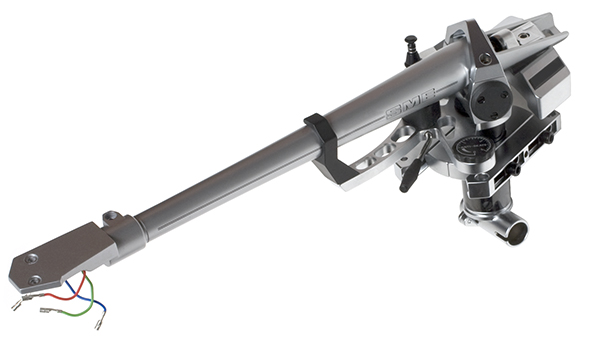 Choices, choices
Choices, choices
There are a few different options to this series of modifications. The external power supply is about $450 at current exchange rates (£299), the arm board for an SME arm is £89.95 and they also offer a great mat for £89.95. A series of upgraded feet and a clamp can also be purchased to take the SL-1200 to the limit of its performance envelope.
Our European readers may have an easier time of this, as the SME arms are not as expensive there as they are here. However, there always seems to be a great deal on a used 309 that someone is trading to move up the ladder. A 309 in excellent shape can usually be had for about $900, and I’ve seen them as low as $700. The M2-09 is a less expensive arm, but in much shorter supply and I’ve actually seen them selling for more than a 309.
I prefer the mechanical robustness of the 309, and the stock SME tonearm cable isn’t bad either, though once you get done with all of this, you now will be able to easily hear the difference an upgraded tonearm cable will make. Should you decide to take this even further, I highly suggest the Furutech AG-12 tonearm cable. It offers world-class performance, and I use it on my other two SME tonearms.
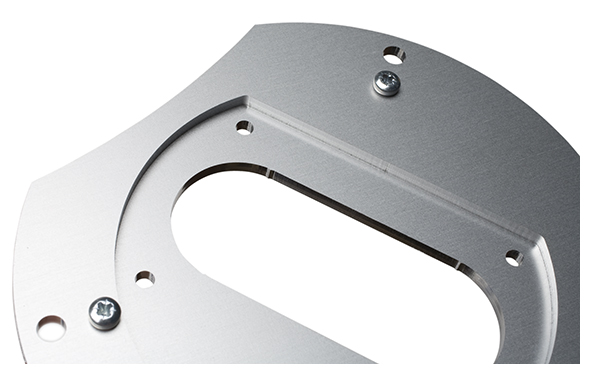 Some assembly required
Some assembly required
The Sound HiFi kit is relatively easy to install, but it will require good basic soldering and mechanical skills. If you have never done anything like this, I would not make this your first electronic project without the help of a friend possessing some skills. The instructions that come with the Sound HiFi kit have a few holes in them, so we will be posting some additional tips and photos on our website to guide you a little better.
Granted, I’ve seen far worse, but being a visual person, I wouldn’t mind just a few more pictures to ease the process.
As with all electrical and mechanical projects, the key is to budget an hour or so of quiet time and give yourself room to spread out everything. As you remove the bottom cover of the SL-1200, there are quite a few screws to keep track of.
All the parts required were included and the organization of the kit was very tidy. I was taking my time and taking pictures along the way. Two hours later, I had a very nice looking SL-1200 with an SME 309 ready for setup and adjustment that looked as if it came that way from the factory. This speaks volumes about the quality of the Sound HiFi modifications.
The Sumiko Blackbird that I had been using on the SME 309 fitted to my Raven Two is now only a headshell swap and quick readjust away. Now you have the versatility of setup that the SME arm offers while retaining the removable headshells that made the stock SL-1200 desirable.
The sound – glorious!
Yes, you heard right; I’m gloating about the sound of an SL-1200. I performed the modifications in two steps – first the power supply and then the tonearm – so that I could evaluate each step’s improvement to the overall sound. Thanks to removing that big transformer from under the platter and adding the more robust external power supply, the SL-1200 sounds more open and focused, even with the stock arm. But when the SME arm was added, the table goes from capable to outstanding.
The more practical readers in the audience will note that adding the external power supply, arm board and a decent used SME 309 to the mix, I’ve quadrupled the original price of the SL1200; wouldn’t I be better off just spending $2,000 on a proper turntable, in a box with a manufacturer’s warranty?
Well, yes, if you worry about that sort of thing. But no, if you want to push the boundaries of what you can achieve for an investment of $2,000 in a turntable. I’ve had the opportunity to listen to a lot of turntables in the $2,000 – $3,000 range from Rega, VPI, Pro-Ject, Music Hall, etc., and for my money, this one is the one to beat.
Would I give up my Rega P9/RB 1000 or Raven TWO with SME 309 for this table? No, it’s not that good, but it’s so damn good for $2,000, paired up with your favorite $900 cartridge, that you may not ever need to spend more money on a turntable unless you have a mega system. This truly is a magic combination, being much more than the sum of its parts. Some find joy in customization, while others find joy in turnkey solutions.
The big-bucks tables still offer more resolution at the frequency extremes, with more fine detail throughout, and that’s what you pay the money for. But balance is the key to a great HiFi system, and for the Journeyman Audiophile, a five-figure analog setup is a waste of money.
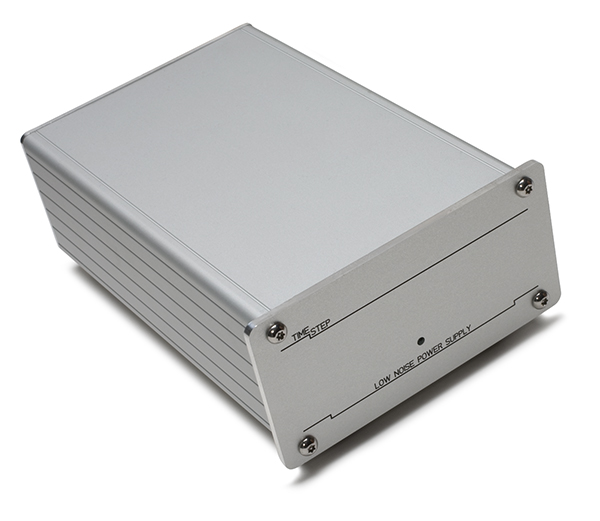 I noticed immediately that the wonderful bass presentation of the stock SL-1200 is still there and, if anything, improved. The table now had plenty of weight and a high degree of bass definition. When listening to Charlie Haden’s Private Collection on Naim records, I could really enjoy all of the texture present in his acoustic-bass playing. The one-note bass feel of the stock table now gone. My favorite early Genesis records now sound more like what I’m used to on my reference tables, and even LL Cool J sounded a lot better, with more bass slam and control.
I noticed immediately that the wonderful bass presentation of the stock SL-1200 is still there and, if anything, improved. The table now had plenty of weight and a high degree of bass definition. When listening to Charlie Haden’s Private Collection on Naim records, I could really enjoy all of the texture present in his acoustic-bass playing. The one-note bass feel of the stock table now gone. My favorite early Genesis records now sound more like what I’m used to on my reference tables, and even LL Cool J sounded a lot better, with more bass slam and control.
I was not ready for the amount of delicacy and resolution through the midrange and high frequencies offered by the modded SL-1200. The stock table is a clunker with acoustic music or densely recorded rock records; things become two dimensional lacking any kind of proper depth. Honestly, I’d prefer a decent CD player to a stock SL-1200 any day.
With the Sound HiFi mods in place combined with the SME arm, serious analog magic is going on. This is an analog setup you can be proud to own. My usual group of audiophile buddies teased me to no end when they saw a Technics table sitting on the rack next to my Raven TWO and Spiral Groove SG-2, but the minute I put a record on, everybody shut up.
Listening to the first track on Lindsey Buckingham’s current release, Gift of Screws, the acoustic guitar barely makes it to the outer edges of the speakers with the stock table. The Sound HiFi version extends the soundstage about three feet past the speaker boundaries, with a healthy measure of height thrown in. Everything has a lot more body and my LP’s sound great again, not flat and lifeless as they did on the stock SL-1200.
Vocals take on a realistic character, now clearly hearing the subtle details that make good analog such a treat, with a very expansive soundstage no matter what I was listening to. Combined with my ARC PH3SE phono stage, the SL-1200 and Sumiko Blackbird make an excellent showing. Stepping up to the Nagra VPS/VFS, even more detail is present.
Sure, pairing this table up with a $4,000 cartridge and an $8,000 phono preamp is a bit overkill, but the Sound HiFi SL-1200 makes a good showing. Playing more in its league, with the Shelter 501, Sumiko Blackbird, Lyra Dorian, etc., and a Lehman Black Cube SE, Dynavector P-75 mk.2 or the like, I dare you to find more pleasing analog playback for this kind of money.
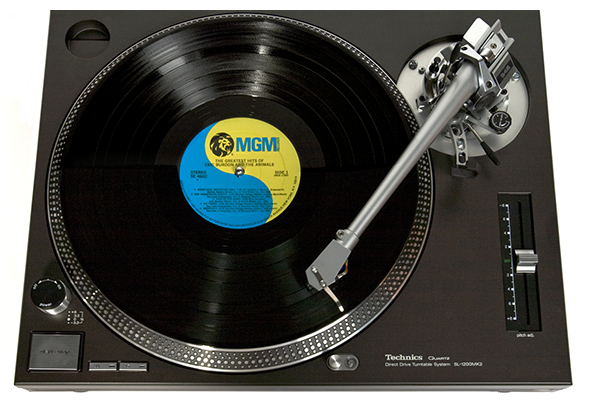 Get out your credit card and call Dave
Get out your credit card and call Dave
Again, if the idea of a project like this is not for you, the cost of shipping an SL-1200 to the U.K. and paying to have these bits installed may outweigh the cost of the end result. Those of you who are handy and up to the challenge of creating something wonderful for a reasonable expenditure should look no further. I can’t think of a more musically revealing turntable for this kind of money and I’ve heard most of them.
When assembling a system in the $10k range, every place you can save $500 is a big plus and money that can be invested in more performance elsewhere or perhaps for some room treatments or even more music! The Sound HiFi modded Technics SL-1200 gets my highest recommendation, and you can plan on seeing it around here for a long time as my reference table at this price point.
NOTE: This article was originally published in issue 22 of TONEAudio. Dave Cawley has some even newer SL-1200 bits that we will be investigating soon. This story is far from complete!
www.soundhifi.com
Peripherals
Preamplifier Burmester 011
Phono Preamplifiers Nagra VPS/VFS, Nagra BPS, ARC PH3SE
Power Amplifier Burmester 911 mk.3
Speakers MartinLogan CLX w/JL Fathom F110 subwoofers (2)
Interconnects Shunyata Aurora
Speaker Cables Shunata Orion




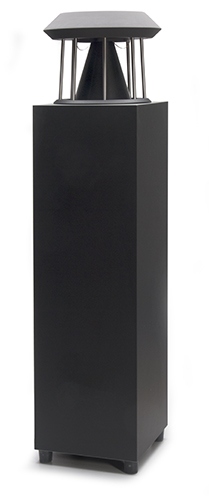
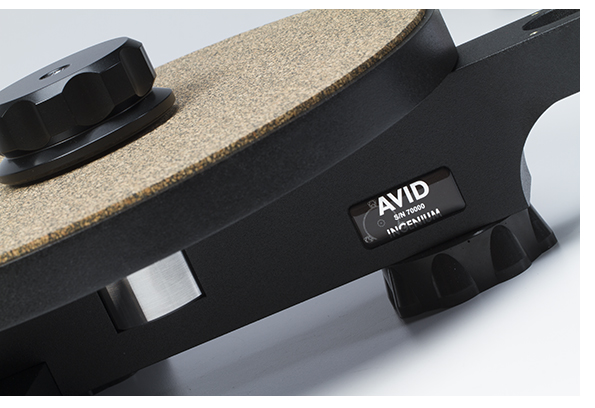 AVID has always taken a more intelligent approach, using mass where needed to get the job done along with a highly tuned suspension to extract the maximum amount of information from those delicate grooves. Their highly successful Diva and Diva IISP turntables use the same W-shaped plinth, derived from the original Acutus design, forming the critical bridge between the tonearm and the turntable bearing, with a simplified elastomer based suspension. The Ingenium’s MDF platter, bearing, spindle and clamp are directly off the Diva II assembly line; but its plinth uses a simpler, rectangle-shaped part, keeping CNC time to a minimum. It also allows the user to see the spindle rotate during playback – kind of cool for technology lovers. The elastomers are a different shape than those of the Diva series tables, but made of the same material and to the same tolerance.
AVID has always taken a more intelligent approach, using mass where needed to get the job done along with a highly tuned suspension to extract the maximum amount of information from those delicate grooves. Their highly successful Diva and Diva IISP turntables use the same W-shaped plinth, derived from the original Acutus design, forming the critical bridge between the tonearm and the turntable bearing, with a simplified elastomer based suspension. The Ingenium’s MDF platter, bearing, spindle and clamp are directly off the Diva II assembly line; but its plinth uses a simpler, rectangle-shaped part, keeping CNC time to a minimum. It also allows the user to see the spindle rotate during playback – kind of cool for technology lovers. The elastomers are a different shape than those of the Diva series tables, but made of the same material and to the same tolerance.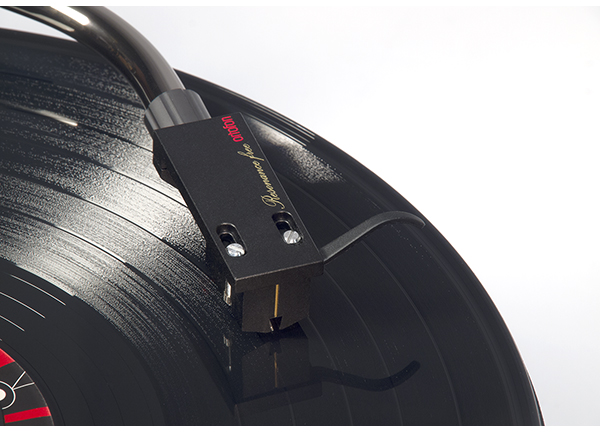
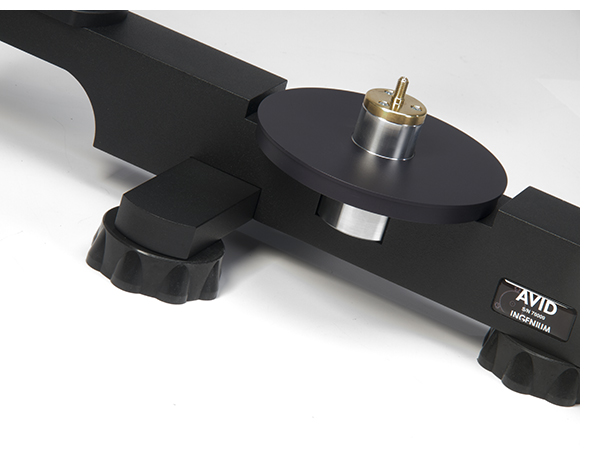 I modified an Ortofon arm adaptor from the Volvere SP, but AVID should have these available shortly as a regular item for the Ingenium. Should you be as impatient as I am, the threads can be gently drilled clean with the aid of a drill press to keep the holes perpendicular to the board, allowing the threaded screws supplied with the Ingenium to clamp the board down. This is the opposite of the other AVID turntables.
I modified an Ortofon arm adaptor from the Volvere SP, but AVID should have these available shortly as a regular item for the Ingenium. Should you be as impatient as I am, the threads can be gently drilled clean with the aid of a drill press to keep the holes perpendicular to the board, allowing the threaded screws supplied with the Ingenium to clamp the board down. This is the opposite of the other AVID turntables.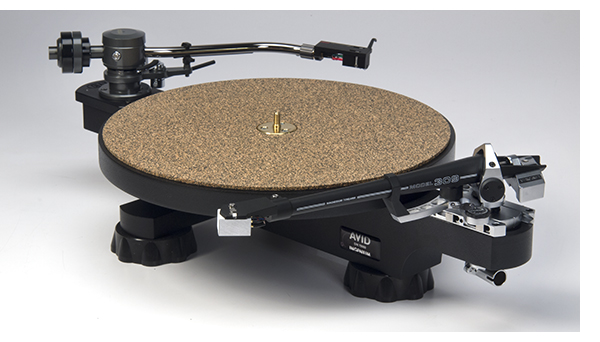 Fantastic results
Fantastic results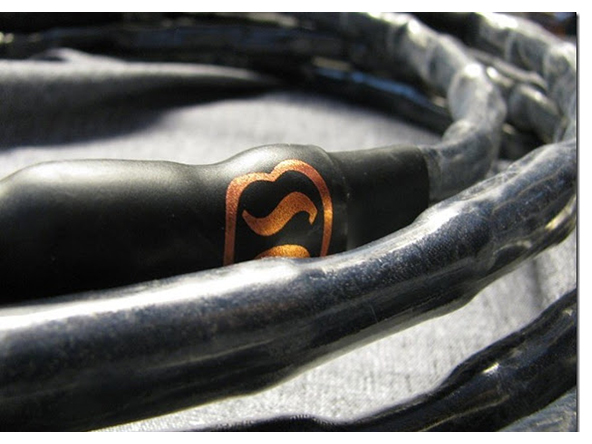 The secrets of the technology behind Skogrand cables seems to be as mystic as Norwegian mythological world and beings.
The secrets of the technology behind Skogrand cables seems to be as mystic as Norwegian mythological world and beings.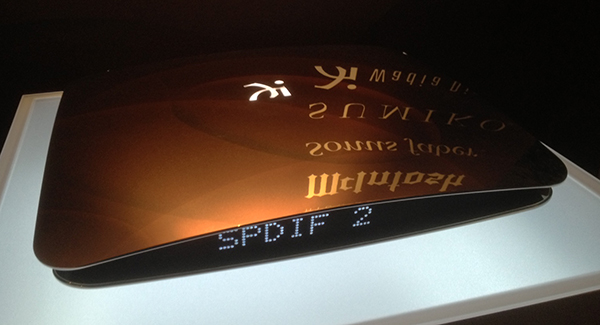
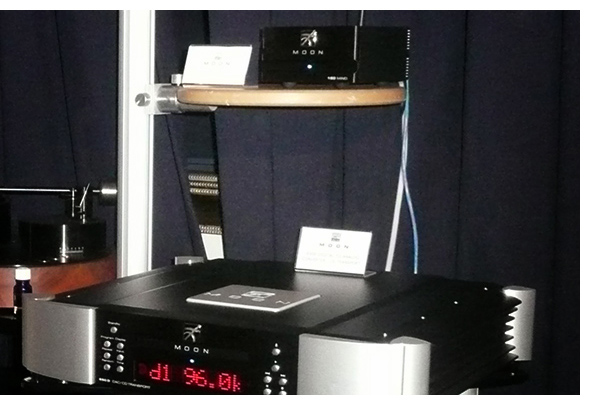 Streaming continues a meteoric rise, with nearly all of the majors offering a streaming product, incorporating your tunes ripped to various storage devices, along with incorporating your favorite internet radio station, or online music provider all from the convenience of your mobile device. Simaudio’s MiND 180 is the perfect example. This technology has become far less garage and much more glamour in the last year, making it easier than ever to get music from the net to your home.
Streaming continues a meteoric rise, with nearly all of the majors offering a streaming product, incorporating your tunes ripped to various storage devices, along with incorporating your favorite internet radio station, or online music provider all from the convenience of your mobile device. Simaudio’s MiND 180 is the perfect example. This technology has become far less garage and much more glamour in the last year, making it easier than ever to get music from the net to your home.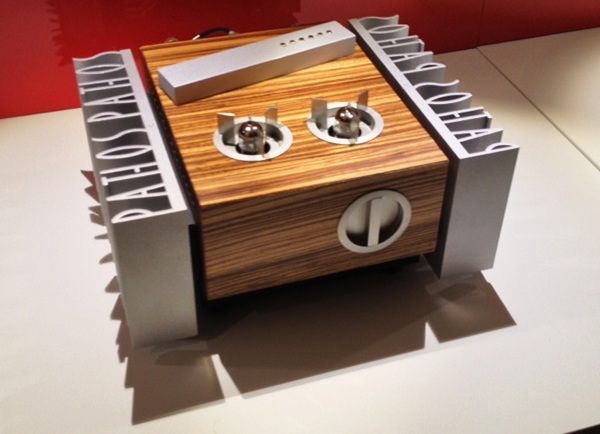
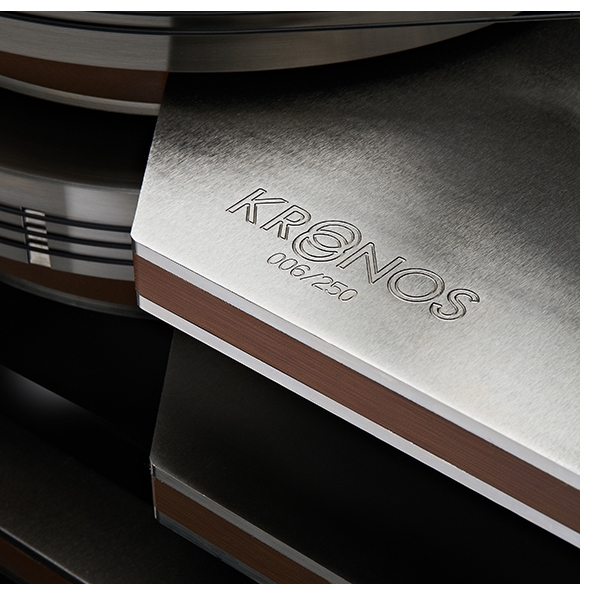 Grain gone
Grain gone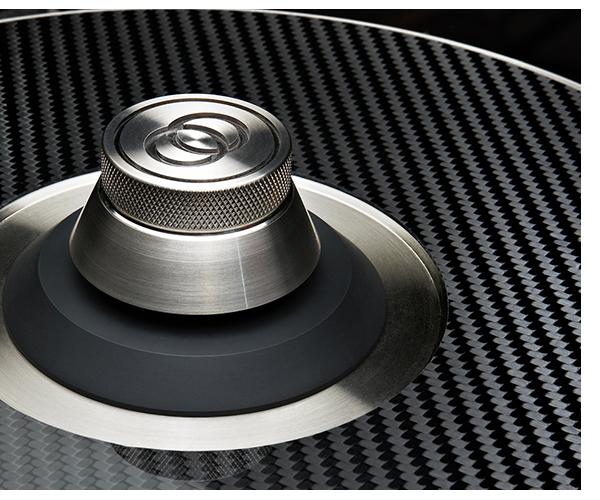 Get a solid shelf
Get a solid shelf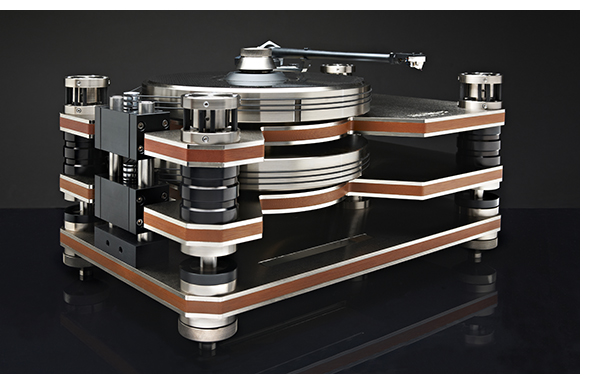 The Kronos Turntable (limited to 250 units)
The Kronos Turntable (limited to 250 units)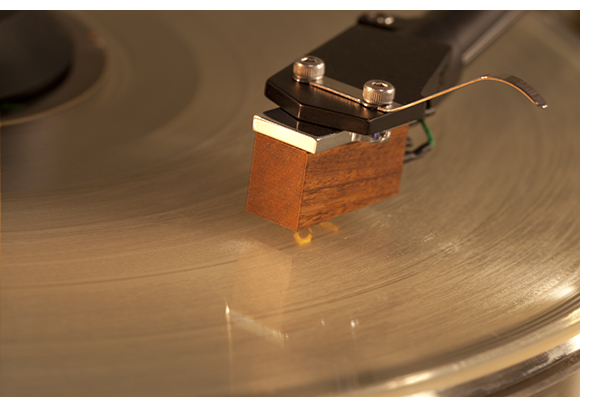 Loving It
Loving It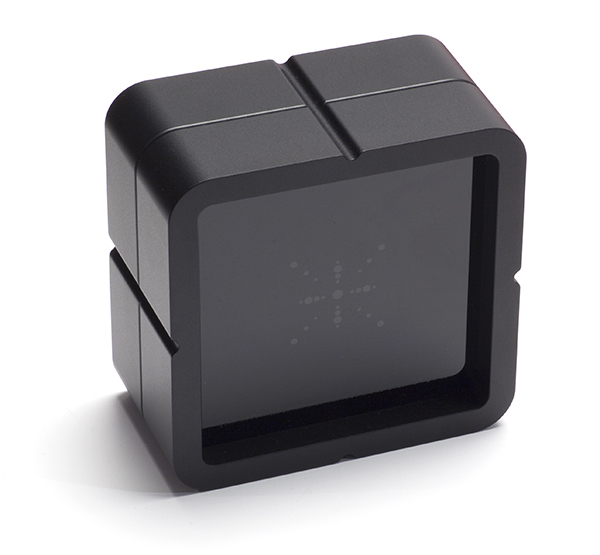 As part of our newly formed alliance with Mono&Stereo, writer Matej Isak begins with one of the most controversial products in high end audio today, the LessLoss Blackbody field conditioner.
As part of our newly formed alliance with Mono&Stereo, writer Matej Isak begins with one of the most controversial products in high end audio today, the LessLoss Blackbody field conditioner.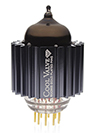 9. EAT ECC88 and ECC803 Tubes (
9. EAT ECC88 and ECC803 Tubes ( Color but not colored
Color but not colored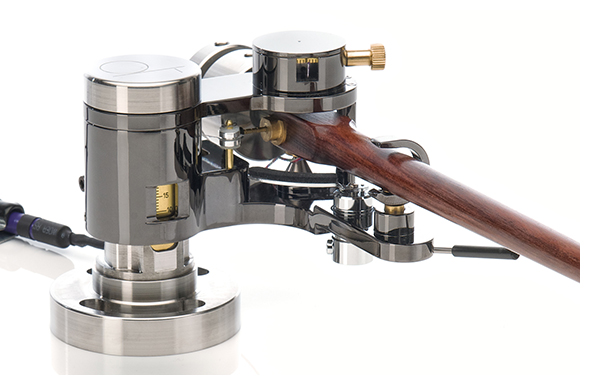 Speaking of magic
Speaking of magic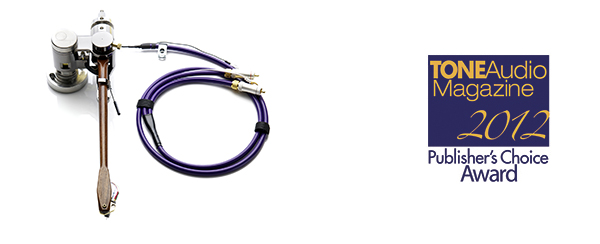 The Durand Talea Tonearm
The Durand Talea Tonearm The ins and outs
The ins and outs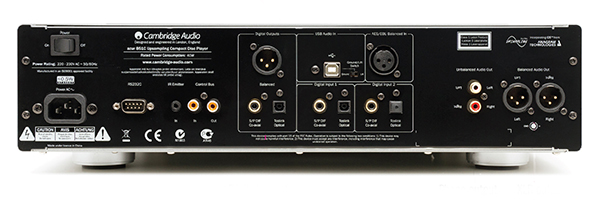 CD Player surprises
CD Player surprises Choices, choices
Choices, choices Some assembly required
Some assembly required I noticed immediately that the wonderful bass presentation of the stock SL-1200 is still there and, if anything, improved. The table now had plenty of weight and a high degree of bass definition. When listening to Charlie Haden’s Private Collection on Naim records, I could really enjoy all of the texture present in his acoustic-bass playing. The one-note bass feel of the stock table now gone. My favorite early Genesis records now sound more like what I’m used to on my reference tables, and even LL Cool J sounded a lot better, with more bass slam and control.
I noticed immediately that the wonderful bass presentation of the stock SL-1200 is still there and, if anything, improved. The table now had plenty of weight and a high degree of bass definition. When listening to Charlie Haden’s Private Collection on Naim records, I could really enjoy all of the texture present in his acoustic-bass playing. The one-note bass feel of the stock table now gone. My favorite early Genesis records now sound more like what I’m used to on my reference tables, and even LL Cool J sounded a lot better, with more bass slam and control. Get out your credit card and call Dave
Get out your credit card and call Dave